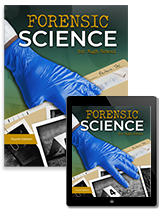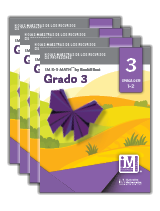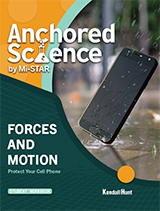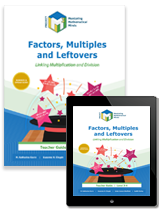Search Listing Name

product:
Forensic Science for High School Student Edition + 6 Year License
Forensic Science for High School is an inquiry-rich science course that focuses on the practices and analyses of physical evidence found at crime scenes. Its comprehensive curriculum provides an effective and engaging way to teach science to high school students.
The program’s flexible, easy-to-use eBooks are compatible with any Internet-en
product:
Project M2 Level 1 Unit 2: Creating the School Measurement Fair: Measuring with Imi and Zani Teacher Guide Package
The Teacher Guide Package includes the Teacher Guide, the 3-Year Teacher Guide eBook License, the Scrapbook, and the Center Book (Level K Only).
Teacher Guide + 3 Year License – It provides lesson planning support in the form of materials lists and unit overviews as well as background information on the geometry, measurement, or number concept being introduced. Mathematical communication, di

product:
Illustrative Mathematics: Grade 3 Spanish Teacher Resource Copy Master Set
Illustrative Mathematics K-5 MathTM is an IM Certified product providing trusted, highly rated materials to ensure students thrive in mathematics. Each Illustrative Mathematics lesson has four phases, from pre-unit practice modules to cool downs, focusing students’ attention on definitions, notations, and graphical conventions contributing to the development of real numbers.
The big ideas in grade 3 include: developing understanding of multiplication and division and strategies for multiplication and division within 100; developing understanding of fractions,


product:
Anchored Science Unit 6.4: Forces & Motion Student Workbook
Anchored Science by Mi-STAR is a comprehensive middle school science curriculum driven by a bold vision for the future, where science isn’t just a subject but a powerful, integrated body of knowledge that equips students to tackle today’s pressing societal challenges. This curriculum harnesses the full potential of the Next Generation Science Standards, empowering students to actively engage with science and engineering practices. They’ll move beyond the classroom, using their skills to solve
product:
OpenSciEd Unit 6.1: Light & Matter Spanish Student Edition
OpenSciEd Middle School science program addresses all middle school NGSS standards. This comprehensive science curriculum empowers students to question, design, investigate, and solve the world around them.
- Phenomenon Based - Centered around exploring phenomena or solving problems
- Driven by Student Questions - Storyline based on students’ questions and ideas
- Grounded in Evidence - Incremental building and revision of ideas based on evidence
- Collaborative - class and teacher figure
product:
Project M3: Level 4-5: Treasures from the Attic: Exploring Fractions Teacher 3 Year Online License
This unit provides an introduction to fractions, focusing on the meaning of mathematical operations in contextual situations rather than learning algorithms to perform computations. Students will learn the relative sizes of fractions and make estimates based on their mathematical thinking when ordering, comparing, adding, subtracting, multiplying or dividing two or more fractions.
The Teacher Guide<

product:
Project M3: Level 3-4: Factors, Multiples and Leftovers: Linking Multiplication and Division Teacher Guide + 3 Year License
In this unit students develop their number sense with a focus on a deeper understanding of multiplication and division. They encounter a range of different problem situations and representations, and learn about the relationship between multiplication and division and the properties associated with these operations
The Teacher Guide is designed to provide background information on the math

